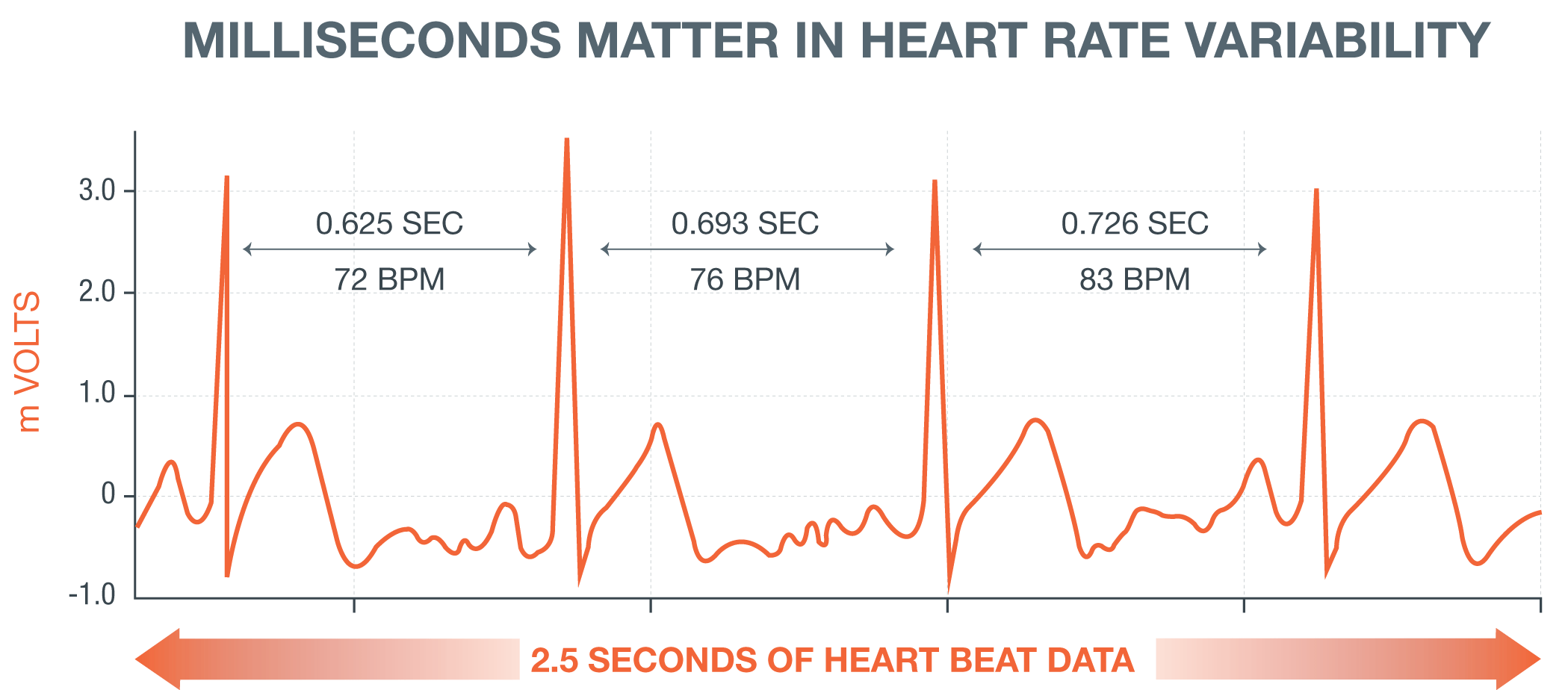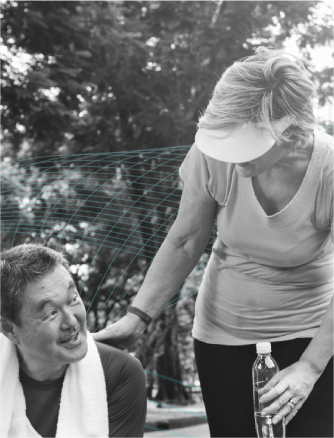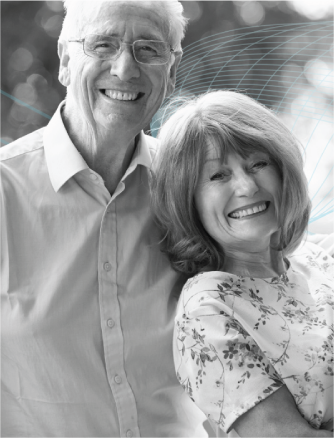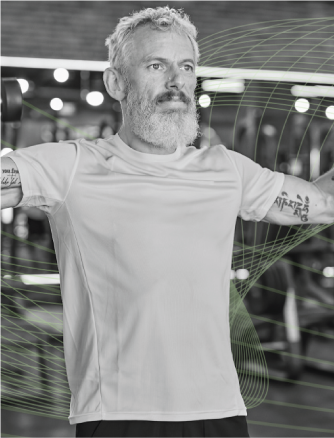Measuring heart rate is nothing new. Doctors have been using monitoring devices for years to measure heart rate and arrhythmias in patients. However, detecting a problem before it occurs almost seems like something out of a futuristic movie. Yet that is exactly what Rockyview General Hospital in Calgary is doing right now in its ICU as it studies heart rate variability (HRV) — the time in milliseconds between two heartbeats.
A heart rate measures the number of heart beats in a given minute. The average resting heart rate is between 60 and 90. The sympathetic and parasympathetic branches control how quickly our hearts beat. So, if we are in a fight or flight mode, our sympathetic response causes our heart rate to quicken. When we are in a normal resting, or recovery mode, our parasympathetic responses are in control. [1]
Because HRV measures the milliseconds between each beat, studying the HRV is important because the variability between heart beats can be related to stresses that a patient is experiencing. Additionally, HRV can actually give clues as to what is going to happen to the heart.
HRV is gaining importance for scientists around the world. For one thing, it shows us the miniscule changes in heart rate and also that heart beats aren’t as regular as we thought they were. According to an article published in Global Advances in Health and Medicine, “We now know that the normal resting rhythm of the heart is highly variable rather than being monotonously regular, which was the widespread notion for many years.” [2]
Milliseconds Make the Difference
What happens in the milliseconds between two heartbeats is being used to assess stress and is becoming an important parameter in chronic disease management, especially cardiology. For example, blood pressure can remain in normal or accepted ranges in a person who is stressed, yet the HRV is what reflects the change. [3] So, understanding how to modulate HRV can have beneficial uses in reducing stress and managing chronic illnesses such as heart disease. Patients benefit when cardiologists have an understanding of HRV modulation. [4]
Rockyview General Hospital is using a monitor developed by Biotricity to measure heart rate variability. “Whereas most wearable heart rate monitors can measure a patient’s heart rate at intervals, Biotricity’s medical-grade, high-resolution ECG is designed to measure the milliseconds between heart beats,” according to an article by Eric Wickland in mHealth Intelligence. David Liepert, MD, leader of the HRV study and anesthesiologist at Rockyview as well as a University of Calgary professor, says that subtleties in between heart beats determine whether a patient is struggling. [5]
“’It’s not about the heart rate but about the number of milliseconds between each beat. Healthy people have a very specific sort of variability,’ says Liepert – as do patients in an ICU who are recovering from a major health issue, or period of stress. “There are patterns when that variability isn’t good” that indicate stress and affect the body’s ability to move around and fuel a healthy heart.”
The accuracy we can achieve with new approaches and innovations in HRV can raise the levels of diagnosis and treatment for practitioners and patients. And while the monitors are currently being used only in the hospital setting in Canada, it’s very likely they will eventually be used remotely to diagnose heart health. If seconds can make the difference between life and death for a heart patient, imagine what milliseconds will do.
Sources:
[1] Amelia Aldao, PhD, “What is Heart Rate Variability? And Why Does It Matter?” Psychology Today, June 22, 2014, https://www.psychologytoday.com/blog/sweet-emotion/201406/what-is-heart-rate-variability-and-why-does-it-matter [2] Rollin McCraty, PhD; Fred Shaffer, PhD, BCB, ”Heart Rate Variability: New Perspectives on Physiological Mechanisms, Assessment of Self-regulatory Capacity, and Health Risk,” Global Advances in Health and Medicine, January 2015, Volume 4, Number 1, http://www.gahmj.com/doi/full/10.7453/gahmj.2014.073 [3] http://www.megaemg.com/knowledge/heart-rate-variability-hrv/ [4] Gabriel Prinsloo, HG Rauch, WE Derman, “A brief review and clinical application of heart rate variability biofeedback in sports, exercise, and rehabilitation medicine,” PubMed, May 2014, http://www.ncbi.nlm.nih.gov/pubmed/24875976 [5] Erik Wicklund, “Wearables and the Heart: Using mHealth to Detect Sickness,” mHealth Intelligence, May 4, 2016, http://mhealthintelligence.com/news/wearables-and-the-heart-using-mhealth-to-detect-sickness





